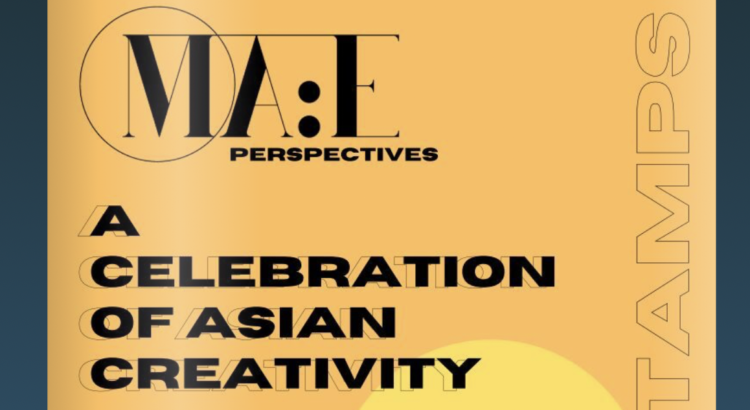I came to the exhibition severely underdressed. Upon entering the gallery, I was greeted with warm lighting, a spaced out selection of art – giving most pieces their own living space to breathe – and a room full of artists and patrons of the arts. Most are dressed well, not to the nines, but in knee-length black dresses or cardigans, getting semi-formal down to a tee. That label was always a bit confusing for me– what constitutes semi, and how much is too formal? Either way, it didn’t matter. What everyone really came here to see was the art.
Placed in each corner of the room, projectors loop videos, rerunning the media art. For the photography, there are display boards that MA:E and the photographers hammered in themselves. Most of the paintings and fine art span the walls, a couple placed in the center of the room.
After the opening remarks and an acknowledgement about the term AAPI and how it generalizes an incredibly diverse community, especially for Pasifika communities, the gallery tour begins. We roam like sheep, tranced by each new work. Everyone cranes their necks to get a better look, arching around one another to see fit. As much as I enjoy how art is in the eye of the beholder, I like hearing directly from each artist. They explain their intentions specific to each piece and the personal meaning behind their art. The distinctness of each artist’s style and voice, and the unique experiences that shape them, are especially apparent.
Some of the pieces that stood out to me:
Riya Aggarwal’s highly-detailed, depthy paintings immediately caught my attention. Each piece flaunts a deliberate to-the-brim intricacy, yet deftly skirts around appearing too busy. I liked how the content of Riya’s paintings were neither black nor white: she specifically explores the cultural tension between “following in the footsteps of my ancestors and creating my own path.” I admired how her artwork elicits feelings of both pride, celebration, and conflict. In True to My Roots, the dark background, body language, and facial expression of the subject evoke a gripping emotionality.
True to My Roots (2020)
Keri Yang’s paintings pop off the page. I like how even the non-3D elements push the limits of their dimension and create visual allusion. Soulmates plays with border, as the subject encroaches outside of its backdrop.
Soulmates (2021)
Perched high up on the wall, taller than the artist herself, is Michelle Ha’s The Girl with the Iron Fist. With her art, Michelle hopes to “represent Asian American experiences by focusing on representing true narratives rather than focusing on the suffering that prejudices bring.” The lighting in the bathroom of the painting is synonymous to the ballroom’s dim ivory brilliance. “With oil paintings historically being about possession and male pleasure in the western context, I bathed my subject in the light of reclaiming that gaze.” I like how the subject looks half taken off-guard, half-bored yet unwavering. Through peering at the audience, this subject, performing the mundane task of brushing her teeth, confronts “the biases the audience has about East Asian American Women. On another layer, by showing the subject doing an activity anyone may do, I make the experience of being an East Asian American woman more accessible to those that find it hard to find empathy with those different than themselves.”
The Girl with the Iron Fist (2021)
Dorothy’s Masked is striking, from both afar and up close. From across the room, at first I thought the aquamarine on the girl’s face looked like tears. The painting emphasizes the importance of masks, and Dorothy chose her subject, her friend Angela, “because of the increase in racism against Asians at the time since the AAPIA community was being blamed for the virus.”
Masked (2020)
Angeline Tran’s Missing Eye, “an experimental top made of denim, selvage, and buttons sewn together both by machine and hand,” was my personal favorite. The material is sewn “to overlap itself and create the illusion of an eye socket and the buttons are placed in the middle, depicting the pupil.” With one eye lying on the breast, and the other at the belly, the garment represents heart and gut instinct. I loved this piece because of its visual attractiveness, message, and frankly, because it’s just so cool. It was also one of the only 3D, sculptural works in the gallery. I am just starting to take a STAMPS sewing mini-course, and hope to take a garment construction class in the future. As someone who expresses creativity largely through writing, exploring visual mediums has been a therapeutic, refreshing process. Angeline’s inventiveness and utilization of scrap material and selvage inspires me to create with intention and take risks with garment sculpture!
Missing Eye (2021)
Event Program: https://www.yumpu.com/en/document/read/66499721/perspectives-gallery-digital-program








